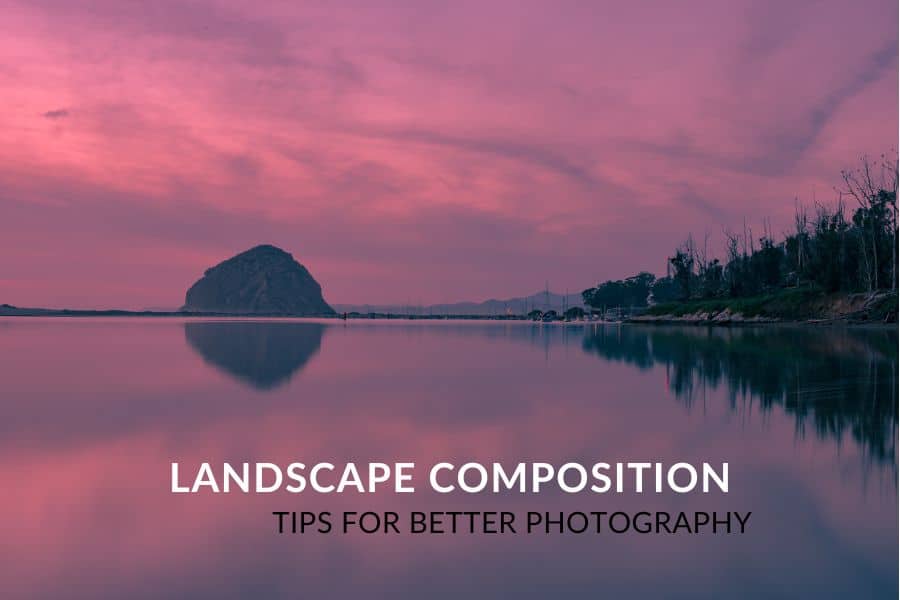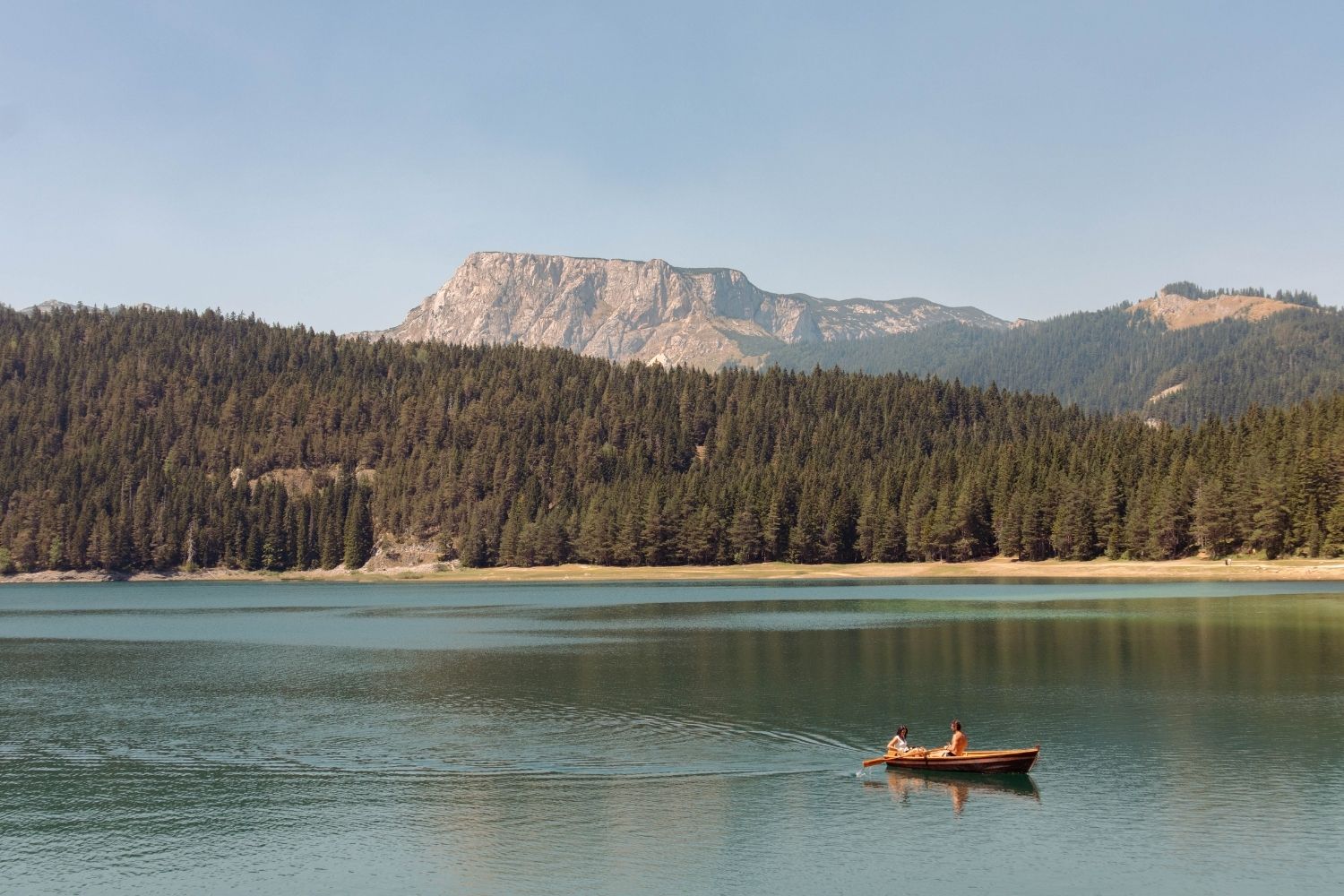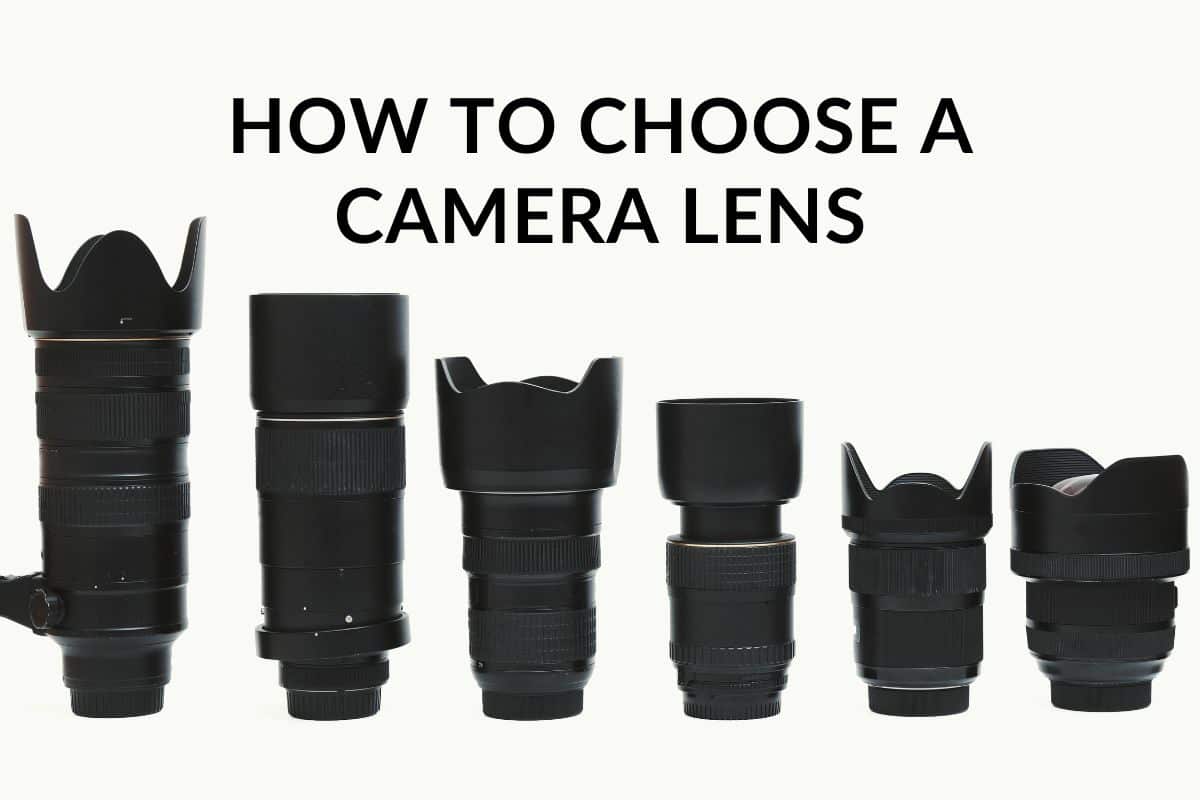Landscape composition is one of the most important aspects of landscape photography. It is how elements are arranged to create an aesthetically pleasing image and tell a story. Many techniques can be used to create an effective landscape composition, but here we will focus on top landscape photography composition tips that every photographer should know.
1. Leading Lines

By using leading lines, the photographer can draw the viewer’s eye toward a certain point in the landscape. This can be a path, river, road, or any other linear form within the landscape that guides the eye to your main subject.
Also by using leading lines, you can create a sense of movement and direction within the landscape, emphasizing a point of focus. Experiment with different angles to maximize the effect of leading lines in landscape composition.
They also help to create a sense of three-dimensionality within the landscape, by leading the viewer’s eyes through the landscape and giving it more depth. Utilizing leading lines can immensely enhance your landscape composition skills.
2. Rule of Thirds
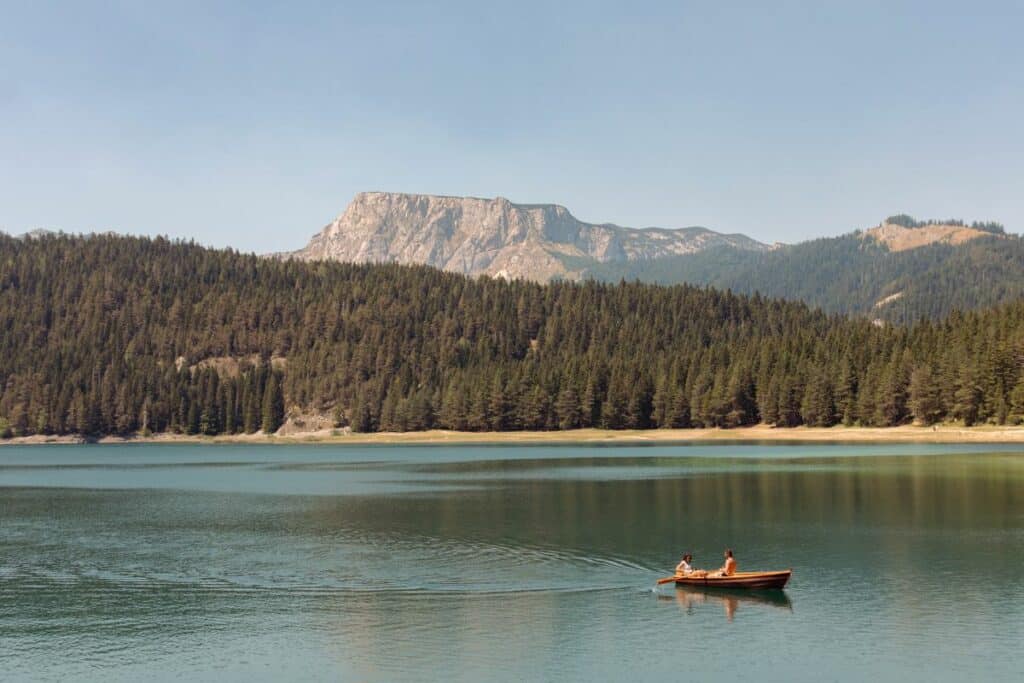
A staple in the world of photography, the rule of thirds can be applied to virtually any – landscape and also portrait composition. By using a 1:1:1 ratio, this technique divides your image into nine equal parts – each with its own frame and grid lines. You should place major elements along these intersections for added depth that will draw viewers further into your scene. This simple yet effective method unlocks an entirely new level of creativity!
Breaking away from conventional norms, the rule of thirds in landscape encourages photographers to compose their shots in a more creative and visually appealing way. Instead of having your horizon line at dead center, try placing it along either the top or bottom horizontal lines for an evenly balanced look that will certainly captivate anyone viewing your picture!
Numerous cameras are equipped with a rule of thirds grid that can be enabled in the live view or even during framing. This feature is beneficial as it allows you to compose your landscape image correctly and overlay it onto an already captured shot afterward if desired.
3. Use layers
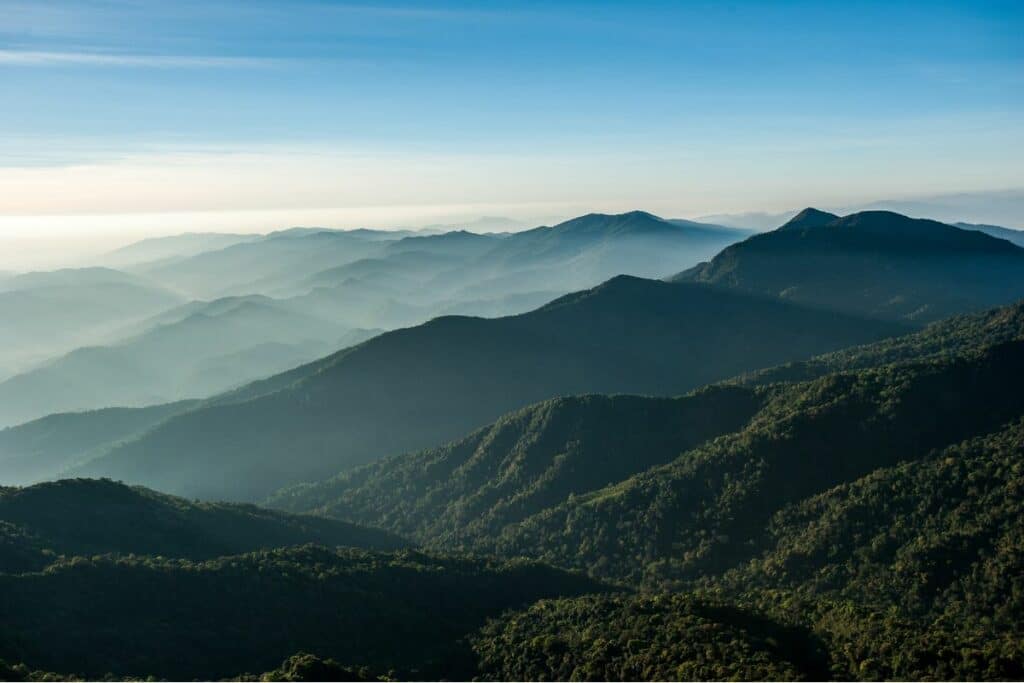
Layers are an incredible tool for creating captivating pieces of art. They work exquisitely in mountainous regions, yet can also be utilized anywhere the same objects repeat and lead to a point of emphasis within the image.
Layers are one of the most beloved landscape photography composition techniques because they make scenes much easier to comprehend, far more aesthetically pleasing, and ultimately breathtaking.
When you’re outdoors with your camera, simply search for a transparent base layer, mid-level layer, and topmost level – though incorporating more layers is certainly acceptable too!
Layered shots are an amazing way to capture dynamic photographs regardless of your camera’s focal length or what subject you’re shooting. To create captivating wide-angle photos with layers, carefully consider the foregrounds, midgrounds, and backgrounds in your composition.
When you’re on the lookout for picturesque scenes with repeating or intersecting elements, that’s a surefire sign that it can be layered to produce an awe-inspiring image. Whenever possible, I suggest taking advantage of this opportunity and layering your shots!
4. Create a balance
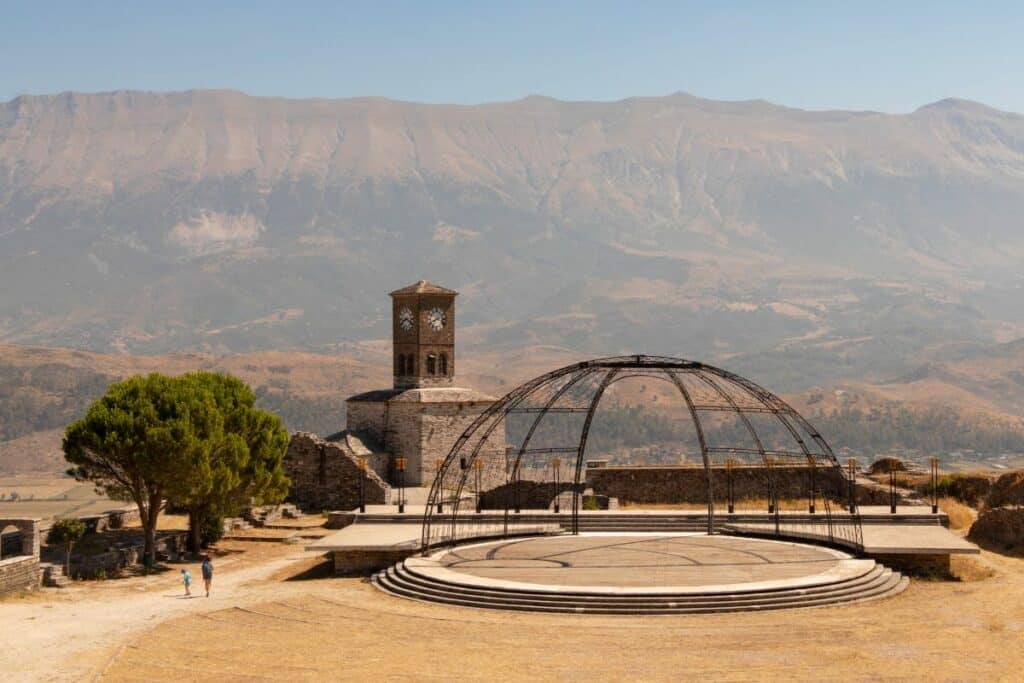
While it might not be apparent at first, having a balanced scene is essential if you wish to have stunning photographs of the scenery. By balance, we are referring to visual harmony in your frame – making sure that all elements inside the picture are distributed evenly giving viewers an overall sense of satisfaction instead of discomfort.
Visualize a scale with your image balanced on it. Will it tip left or right? If you don’t proportionately distribute the components of your photograph, some areas will feel neglected and draw more attention than other segments in the frame, causing an imbalance in its entirety.
5. Add something to the foreground
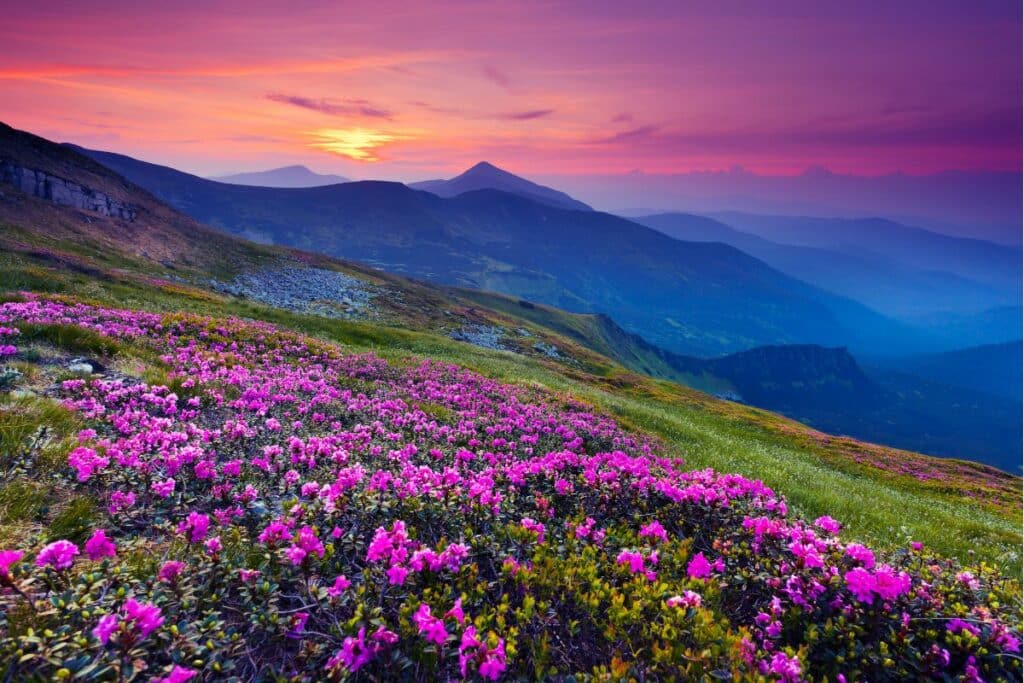
For an extra creative and dynamic look to your landscape images, add a powerful element in the foreground. This will help create separation and texture between each level of the image, making it more visually appealing! When choosing a focal point for this technique, make sure that it complements rather than takes away from other levels. Doing so can result in some truly stunning imagery with maximum impact!
Be sure to incorporate a foreground anchor that your viewers can identify with. It may be an object, such as a shell or blossom, or the edge of a platform from which they would observe the scenery you are highlighting. This way you will engage their attention and make them feel more connected to the scene.
When you’re capturing a landscape, incorporating a foreground layer can add an extra dimension of depth and create a scale for the middle or background. Try positioning your foreground elements from different angles to enhance the scene. For instance, use them as guiding lines that draw onlookers’ attention to the main subject! Experiment with new perspectives by getting down low.
6. Framing the image
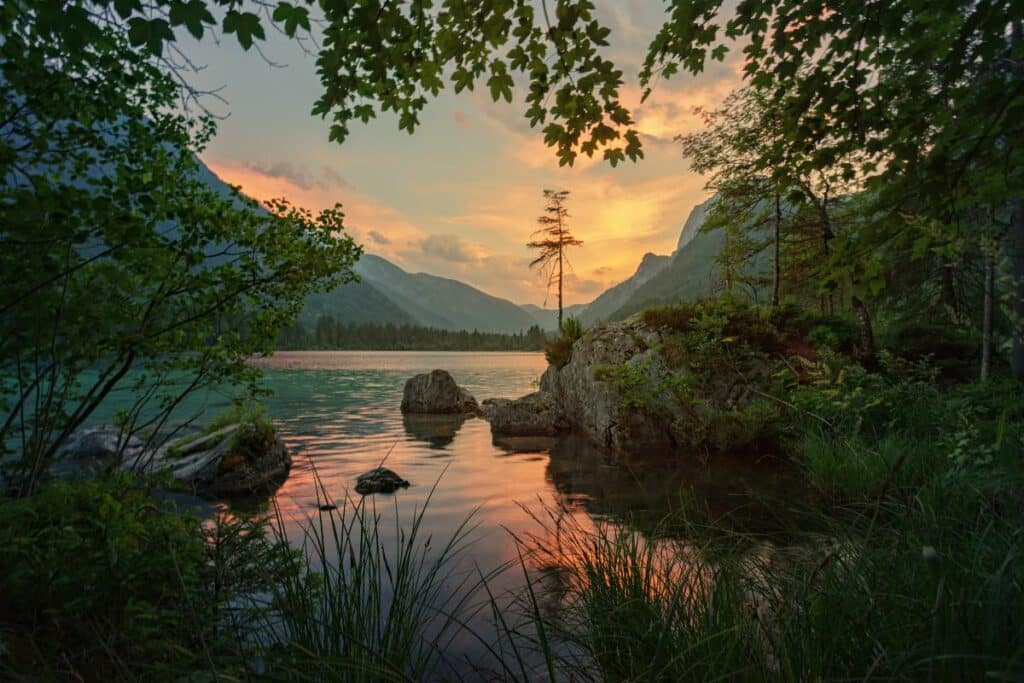
Have you ever marveled at how much a photograph transforms when placed in an elegant frame? Well, the same concept applies to landscape photography composition. With framing in photography, it can take on an entirely new level of beauty and become something truly unique. Framing is the perfect way to elevate artwork’s aesthetic appeal!
While it can be intimidating to locate frames in open areas, when you’re shooting within a more busy landscape, there are usually trees or rocks that make for an ideal framing device. A simple frame like this often takes a good composition and elevates it. By clearly outlining the area where your viewer should focus their attention and intelligently blocking out any untidy elements.
Besides, a great secret to success when working with foreground frames is investing time in playing around with different aperture settings. A narrow aperture will help you capture lots of detail while producing excellent sharpness in the image. On the other hand, if you want something special and creative, opt for a wide opening that will blur your frame’s lower part and bring out amazing results!
With any other landscape composition techniques, proper framing should further enhance the elements of your photograph and aid you in conveying the story behind what is being photographed.
7. Use negative space
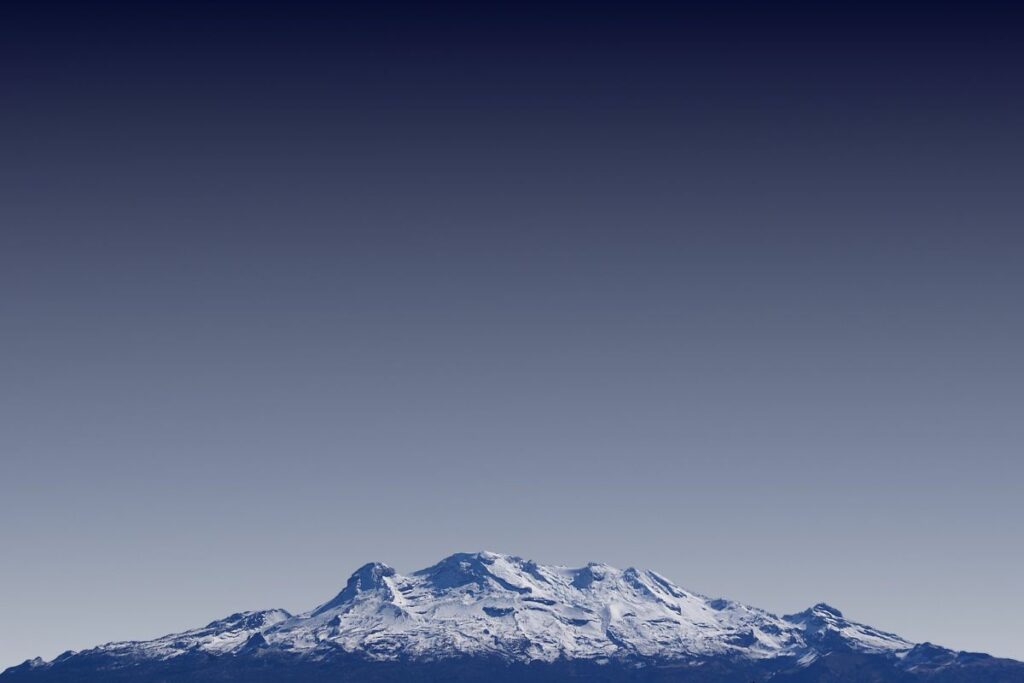
Minimalism is currently dominating the landscape photography scene. With the effective use of negative space, you can create an area around your main subject that adds a sense of scale while confirming its importance in the composition. This technique allows viewers’ eyes to be drawn to your primary object and often creates a dramatic effect that conveys feelings like solitude or loneliness.
Seek out a prospect that’s full of negative space, like a sizable portion of blue sky, an expansive field of lush grasses, or even an untouched stretch of sand. These eye-catching and inviting scenes can offer stunning backdrops for photos!
Search for a little, remote, desolate-looking subject like a tree in an open field or a rock standing out from the flat scenery or even someone can be your focus.
Frame your subject so that it is small within the shot, surrounded by large amounts of open space. It’s beneficial to stray away from the rule of thirds here; instead of plopping them in one of the designated intersection points, move them close to an edge for added emphasis on emptiness.
You will be left with a captivating image that is both modern and ageless.
8. Vanishing point

Utilizing vanishing points in photography can be an incredibly powerful tool, giving the image a greater sense of depth and space. Capturing this point where all parallel lines seem to converge can create stunning visual effects that will draw viewers into the world you have created with your photograph.
Imagine yourself standing on a lengthy bridge, surrounded by railings that seem to meet in the distance. This optical illusion is known as a single-point or one-point perspective. Objects look progressively smaller until they appear like a solitary points at the horizon. Likewise, two parallel lines in the foreground slowly become closer and eventually converge, creating this captivating trick of perception!
For the best results with vanishing point photography, be sure to use a wide depth of field. To achieve this, keep your aperture around f11 or f16 depending on the lens and scene. Additionally, you must pay attention to where you place your focus. Ensure both the foreground and background stay in clear focus if wanting to utilize one-point perspective images optimally.
Incorporating vanishing points into your photos can completely alter their meaning and add a dramatic flair. With a few clicks of the shutter, you can transform an ordinary image into something extraordinary!
9. Add some symmetry

Capturing symmetry in photography results in a visually harmonious image, one that demonstrates pleasing proportion and balance. Achieving such an effect requires structuring the composition to make each half of the photo appear identically balanced yet still separate from one another. When done correctly, this can produce stunning images full of aesthetically-pleasing symmetry.
When it comes to photographic landscape composition, there are three fundamental categories of symmetry: Vertical, Horizontal, and Radial Symmetry.
If a photo is vertically symmetrical then this means that the image has been reflected across an imaginary vertical line.
In contrast to this, horizontal symmetry occurs when the reflection takes place along a horizontal line.
Radial symmetry refers to reflections that radiate outwards from one central point within the image.
Symmetry may be a common tool to produce aesthetic images, but you must use it judiciously – too much symmetry can lead to an uninspiring and tedious output.
10. Use reflections
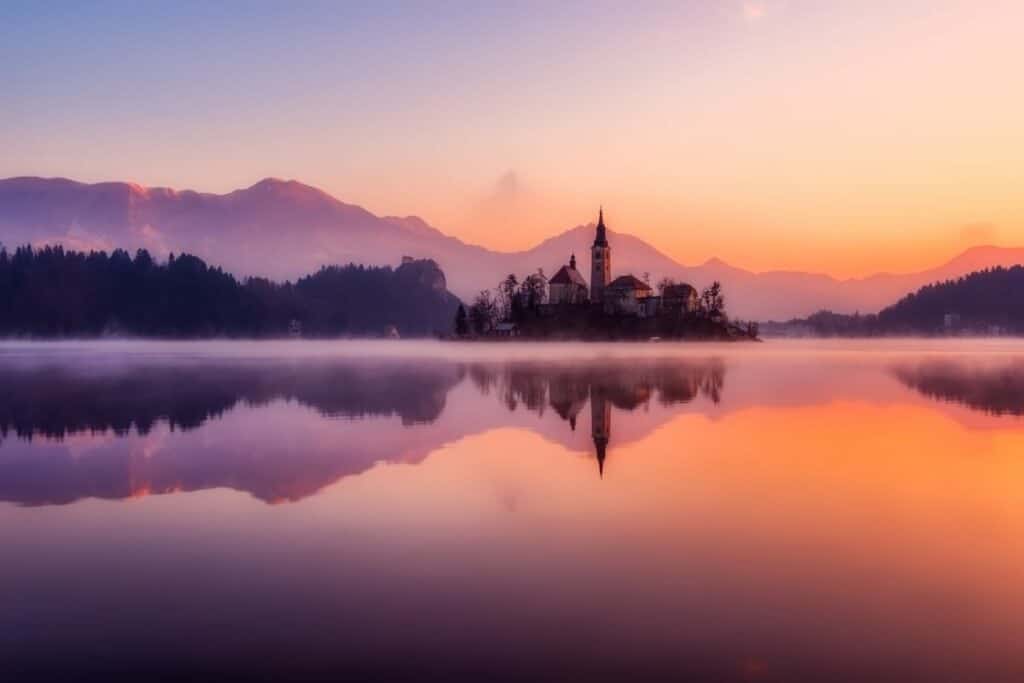
Reflections make landscape photography composition extraordinary since they naturally draw the eye. Water is an exceptional element with its special beauty, and a reflective surface can take your images to the next level. When you photograph during sunset or sunrise, light reflecting off of water creates a powerful image.
Even though lakes and oceans are classic and awe-inspiring locations to capture beautiful reflections, there are many other places you can find them. Whether it’s glossy stones or drenched sand on the shoreline, wet surfaces will still reflect light in your photos. You don’t need a large body of water either. Small tide pools also provide excellent opportunities for reflection photography!
Even if you’re nowhere near the sea or a lake, amazing reflections can still be found. Next time it rains, take your camera and search for ponds, puddles, or large pools of water. Who knows what kind of stunning reflection landscapes await?
With a bit of fortune and creative thinking, even more than just the grandiose mountain scenes can be captured in beautiful photographs!
11. Play with focal lenghts
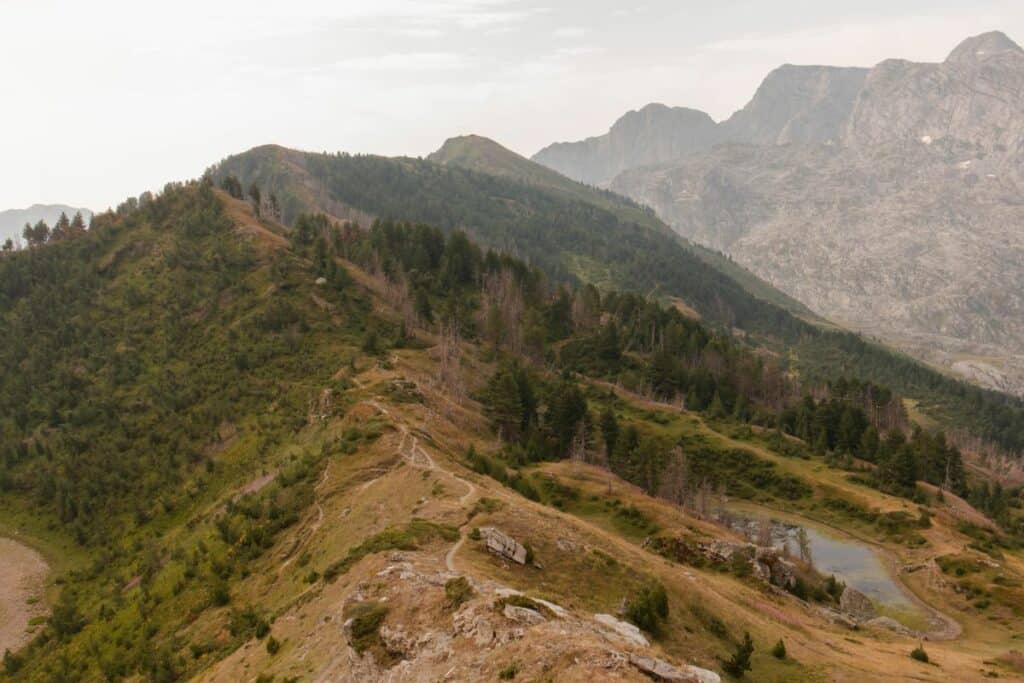
Zoom in and out of your landscape compositions using different lens focal lengths! Wide-angle lenses between 10mm to 30mm offer a range of opportunities. Get close and low to foreground elements, frame subjects within trees, or capture the grand scenes. For maximum sharpness from front to back with an impressive depth-of-field: shoot wide angle at narrow aperture settings such as f/8 – f/16.
Longer lenses, ranging from 70mm up to 600mm, are ideal for capturing distant landscapes and buildings in detail. Not only that, but the narrow view of telephoto lenses can also compress perspective – giving you an image with a background and foreground in sharp focus! This lets you use very wide aperture settings (f/2.8-f/8) while still ensuring maximum clarity across your entire shot.
Conclusion
Knowing some landscape composition techniques in photography is a way to capture images with stunning details and unique perspectives. Whether you use leading lines, symmetry, reflections or different lens focal lengths, each technique can help bring your photos to life. With the right combination of elements and taking advantage of natural light, you can create unforgettable captivating scenes! As a photographer, it’s up to you to get creative and explore the vast possibilities of landscape composition. Good luck!
PIN IT
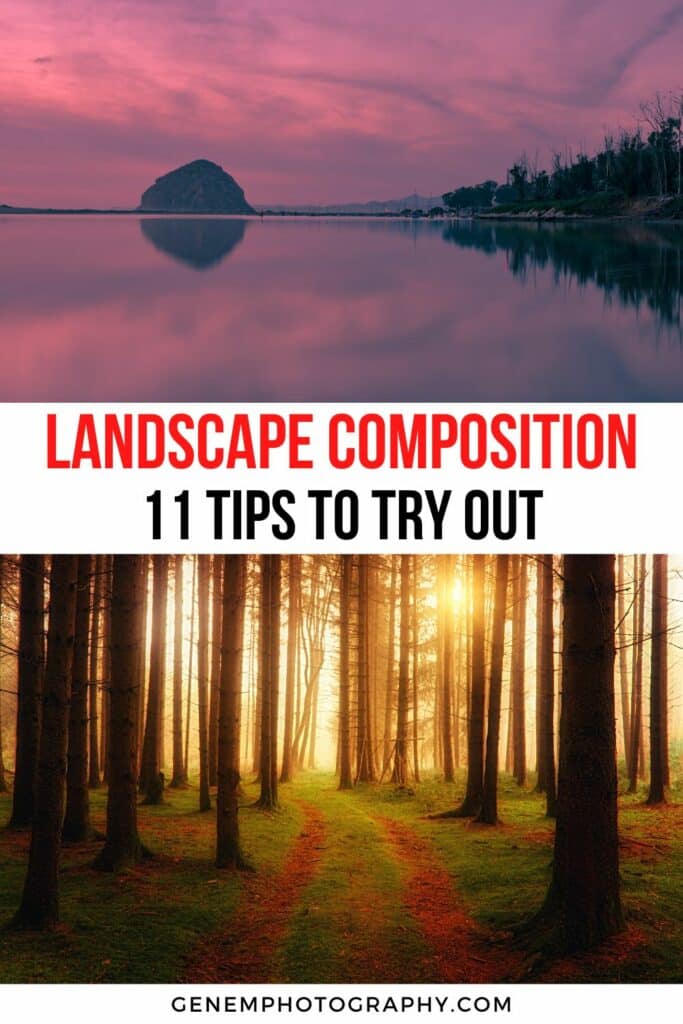
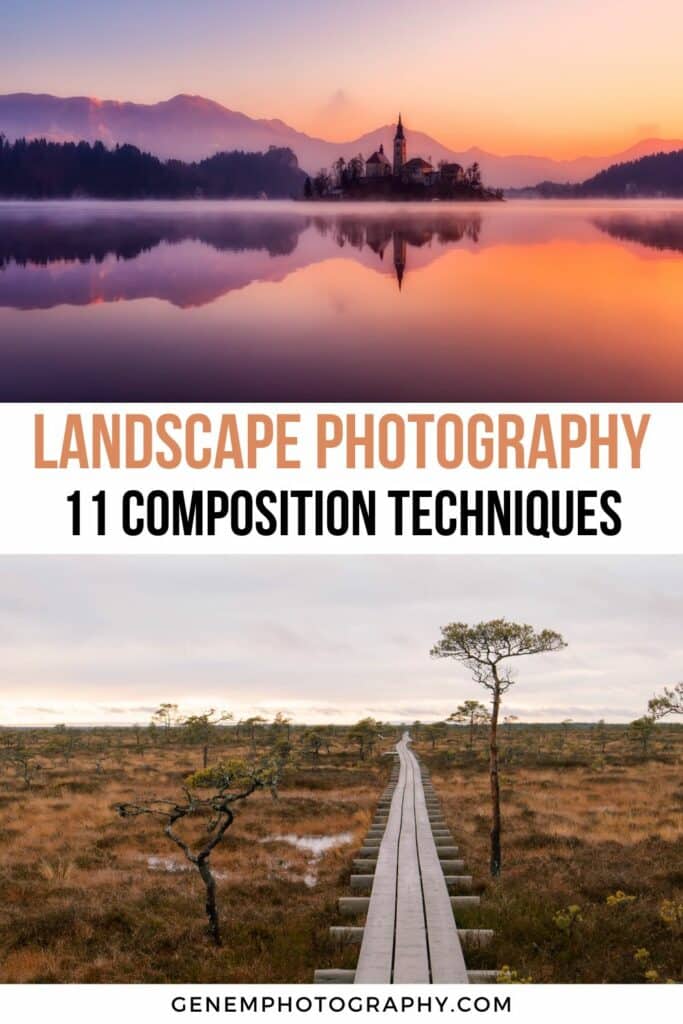
Read more about photography tips:
